Through the woods: Ernst Gamperl’s oak vessels win the inaugural Loewe Craft Prize
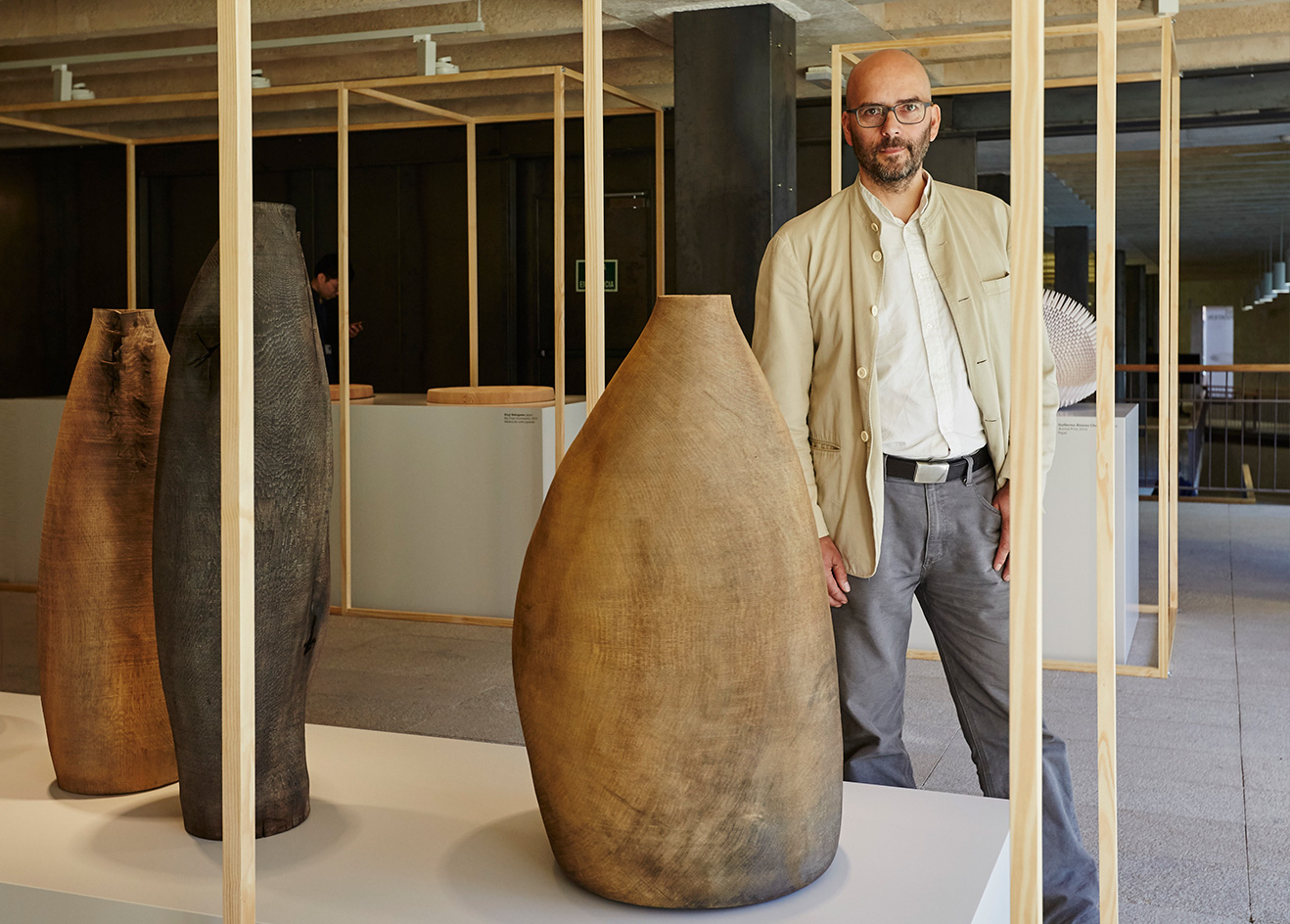
‘The story started seven years ago when I found a huge oak tree that had fallen in a storm,’ explains German-born Ernst Gamperl of his collection of carved and clay-treated hollowed oak vessels that were awarded the first Loewe Craft Prize on Monday. ‘After my idea was born, I kept all of the objects I made from the wood, with the intention of presenting them as a complete exhibition.’
At the awards ceremony at COAM, the Official College of Architects of Madrid, Gamperl’s winning entry, ‘Tree of Life 2’ – crafted to represent the story of an uprooted tree – was exhibited alongside the work of 26 global finalists. The works range from colourful hand-embroidered tapestries to inflated gold rings, folded paper structures to dark porcelain vessels, whittled down from nearly 4,000 entries.
‘When I came to Madrid I thought “We’ve got this amazing country with this inherent idea of making,”’ says creative director Jonathan Anderson, who began devising the Loewe Craft Prize three years ago. Since taking the helm of the Spanish house in 2013, one renowned for its artisanal approach to leather goods, Anderson has worked to emphasise its connection to craft. The new Loewe home collection, which debuted at Salone del Mobile last week, and featured in our May 2017 issue (W*218), includes oak fruit bowls, ladders and candlesticks carved with mice.
The pieces were created by Simon Cartwright, a descendant of the Yorkshire woodworker Robert ‘Mouseman’ Thompson, who after opening his workshop in the 1920’s, used to carve them onto pieces as his signature. ‘For me the prize was about bringing in a new vocabulary and support,’ Anderson says. 'It’s about building the idea of creating cultural brands rather than luxury brands.’
This support was emphasised by Anderson and a panel of renowned judges – including Naoto Fukasawa, Deyan Sudjic and Patricia Urquiola – who awarded not just one grand prize of €50,000, but two special mention awards of €5,000 each. Runner-up Yoshiaki Kojiro, a glassmaker from Japan, impressed with an ocean blue glass bowl, crafted from glass powder and copper oxide, featuring a bubbling liquid-like centre. Artesanías Panikua also earned a special mention, the family basket weaving business from Mexico was represented by husband-and-wife Antonio and Verónica Cornelio and their intricate wheat piece ‘Tata Curiata’ has been created from hundreds of weaved fibres, denoted a sun deity.
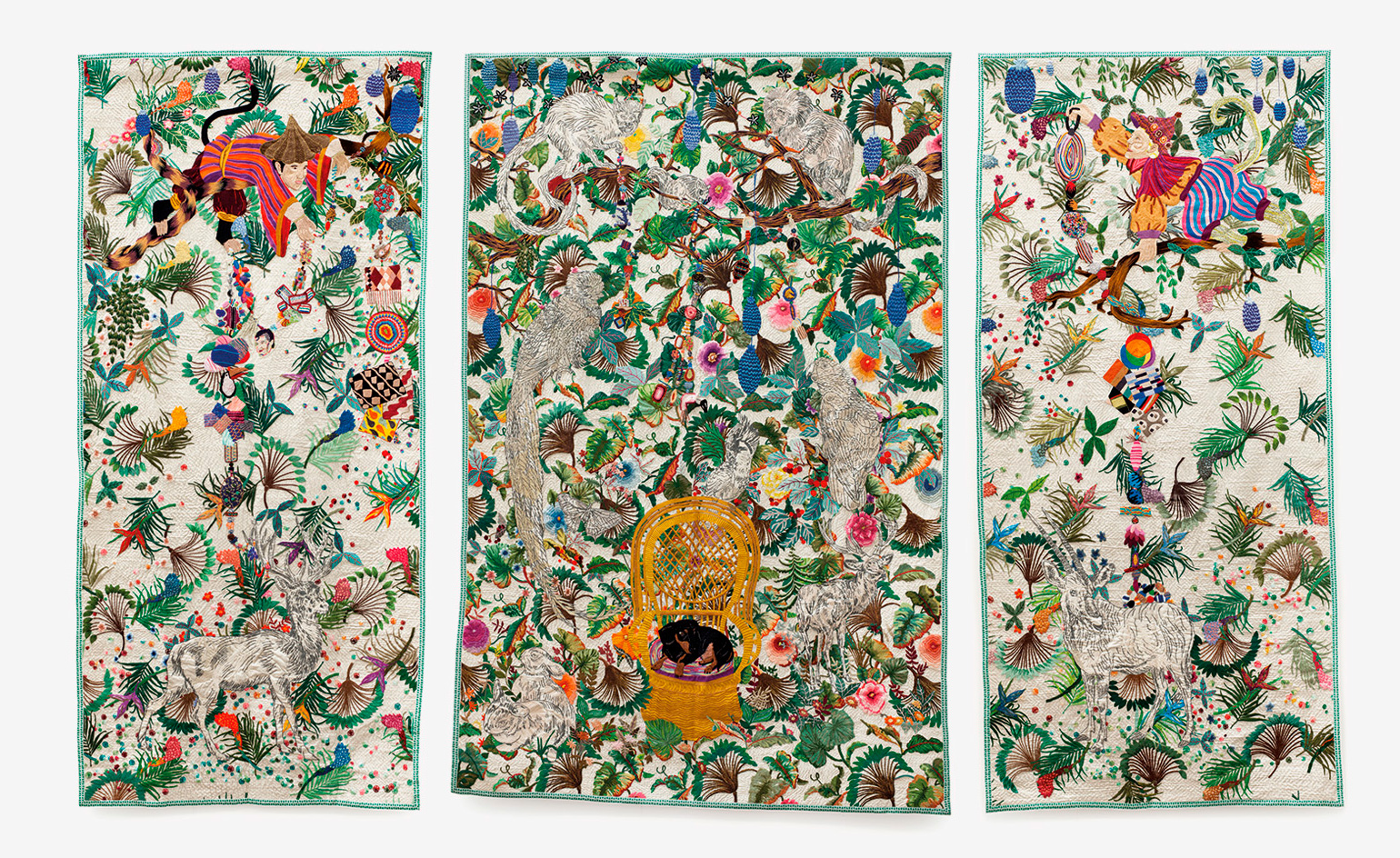
‘Selva Blanca’, by Leo Chiachio and Daniel Giannone, 2015
‘What made sense for all the jury members, was that Gamperl’s wooden vessel, crafted from a 300-year-old tree, which has fallen down because of lightning, and then is put into something else, really defines everything in this moment,’ Anderson says of Gamperl’s work. ‘We have to shape the past for the future.’
This reconfiguration of the past was a theme throughout the exhibition, which will also tour to New York, Tokyo and London. Leo Chiachio and Daniel Giannone, a couple in both work and life, presented a triptych of hand-embroidered tapestries, made from printed material which had been erased with stitches depicting jungle animals and tropical palms, their pet dachshund, and strips of equestrian print Hermès scarves. ‘Our education is in painting, but we are translating the knowledge of the painter, using another language, in this case embroidery,’ they explain.
Meanwhile, Canada-based Brendan Lee Satish Tang created a figurative ceramic vase, inspired by both 18th century gilded ormolu and robotic forms in Japanese manga. ‘The piece became a kind of a meditation on how technology interacts with tradition and how it shifts and changes it,’ he says.
‘Things have to be real. We want things that speak to us emotionally,’ Anderson muses on the impact of the digital world on human interaction. ‘We want things that make us happy.’ In contrast to the perfection presented across social media, finalists expressed a joyfulness in imperfection. Preoccupied with the concept of mending, London-born artist Celia Pym, submitted a once tattered hand-knitted sweater, given to her by the Norwegian textile designer Annemor Sundbøis, repaired using white thread. ‘I make it visible because I don’t think you can hide damage,’ she says. ‘It’s so tender working with something handmade.’
Gamperl too finds beauty in imperfection, his oak vessels visible with knots and the wood’s natural grain, then carved with his own hands. ‘The oak is naturally deformed – it’s a mixture of perfection and imperfection,’ he says. ‘The parallel grooves I have made add a deepness to the piece. For me, craft is about that personal union.’

Gamperl's prize-winning body of work, 'Tree of Life 2', features oak-hewn vessels crafted from a 300-year-old tree that was uprooted during a storm
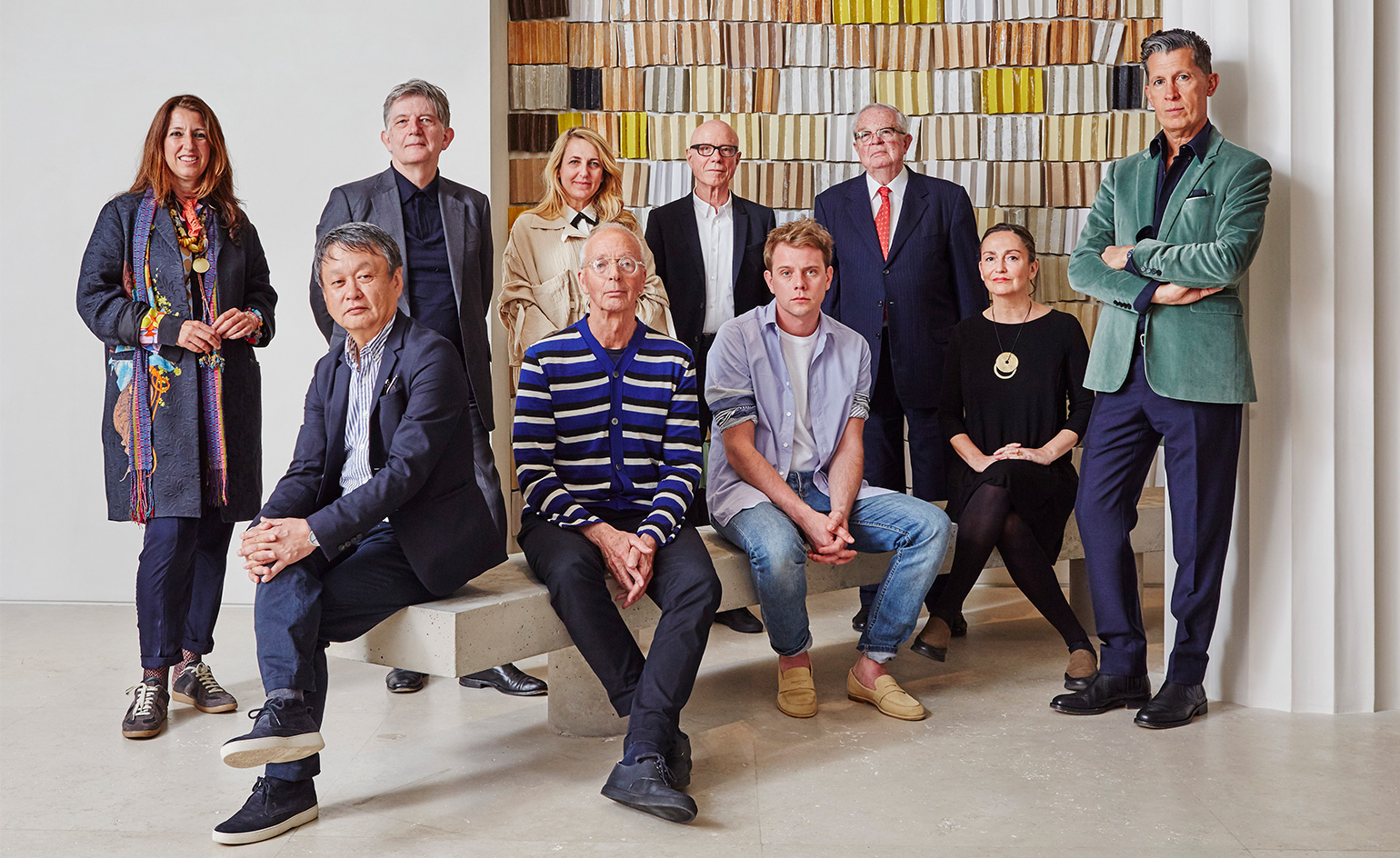
The Loewe Craft Prize's impressive panel of judges included, from left, architect Benedetta Tagliabue; designer Naoto Fukasawa; Design Museum London director Deyan Sudjic; designer Patricia Urquiola; jewellery designer Gijs Bakker; Vitra chairman emeritus Rolf Fehlbaum; Loewe creative director Jonathan Anderson; Loewe Foundation honorary president Enrique Loewe; author Anatxu Zabalbeascoa; and W editor-in-chief Stefano Tonchi
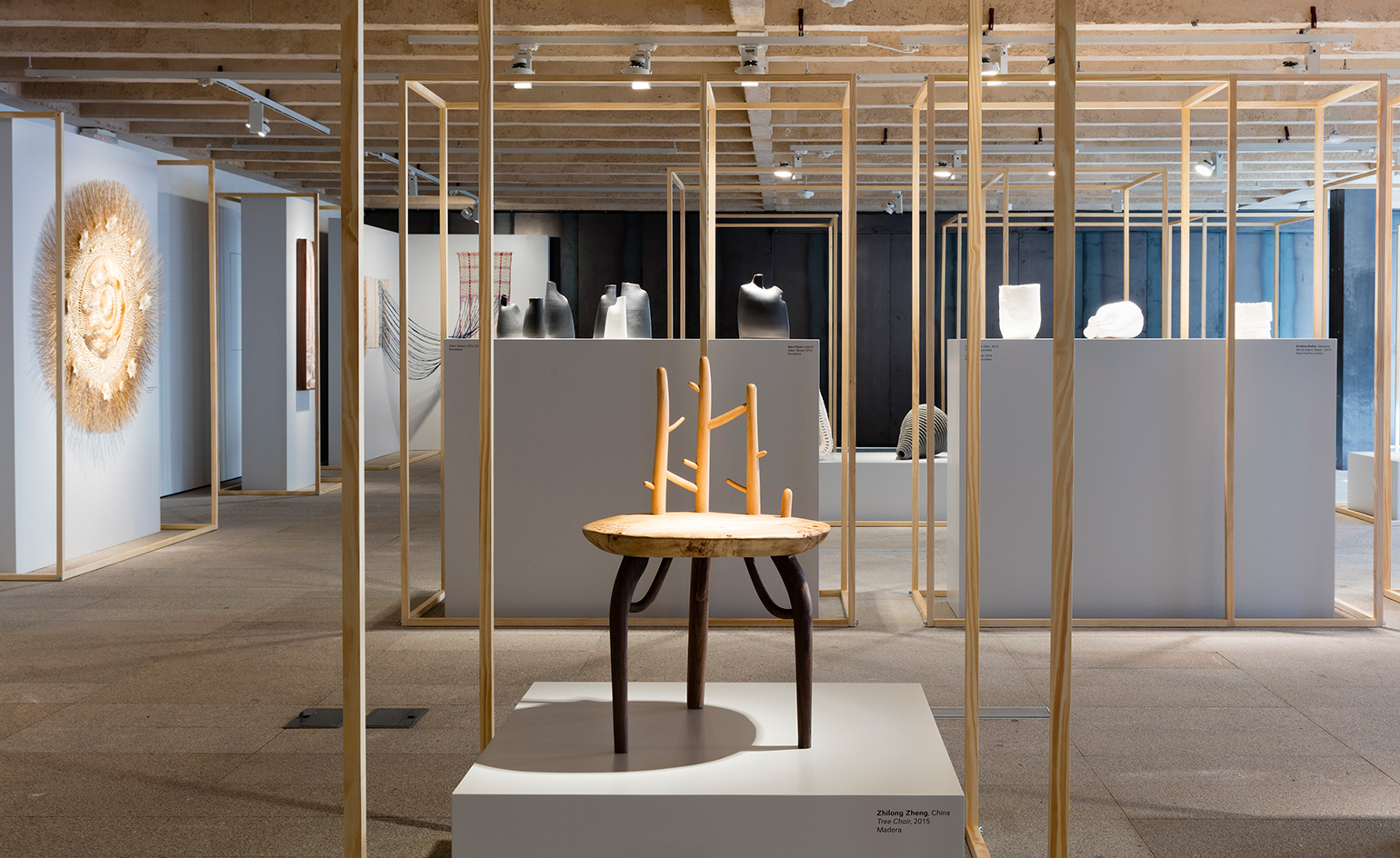
All of the 26 finalists' pieces are on view in an exhibition at COAM, the Official College of Architects of Madrid. Pictured, Chinese-born artisan Zhilong Zheng's 'Tree Chair' (2015)
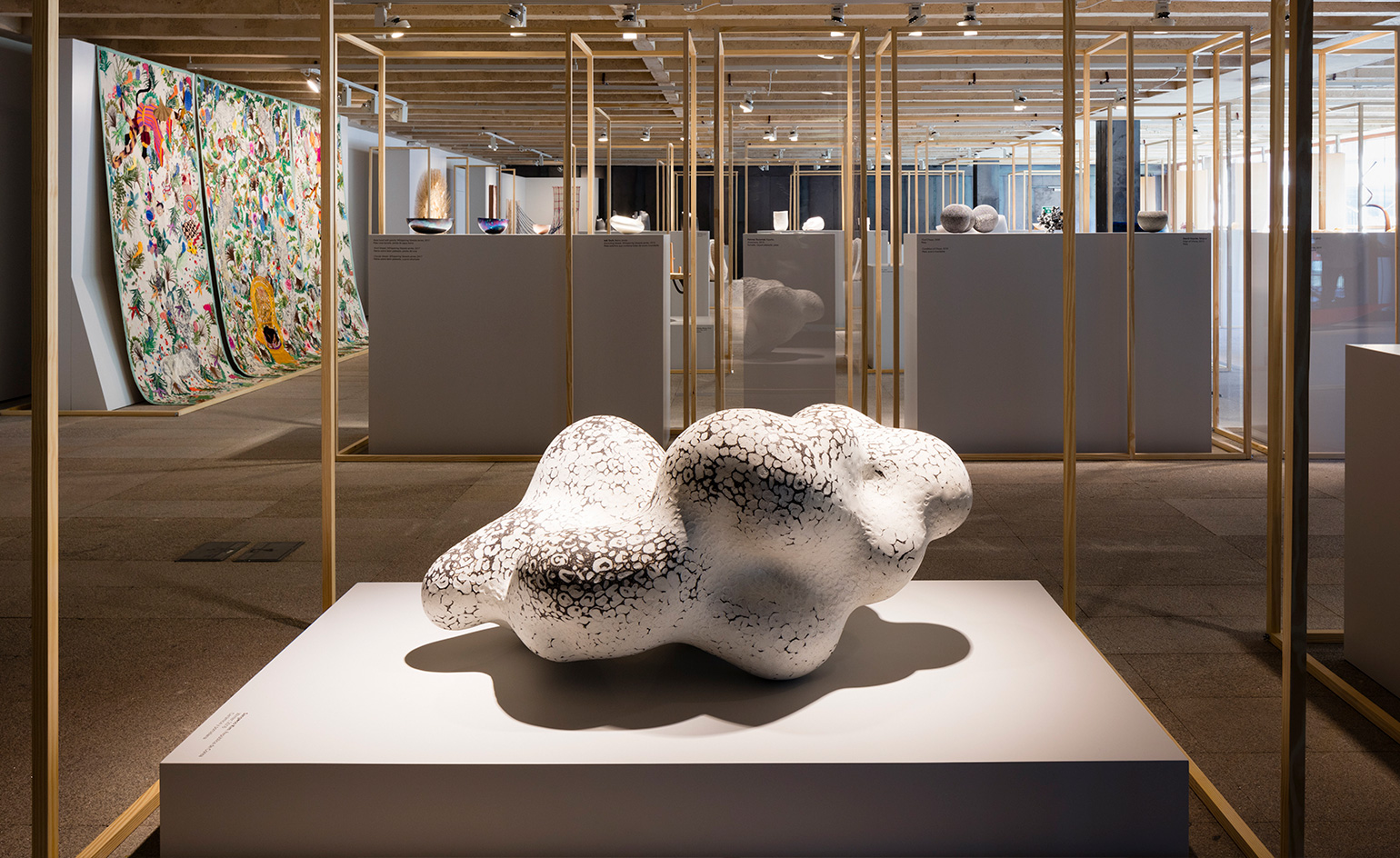
Korean ceramicist Sangwoo Kim's 'Winter' (2016) takes inspiration from the snow-capped mountains of Switzerland

Japanese glassmaker Yoshiaki Kojiro was presented with a special mention award for 'Structural Blue' (2015) a bowl crafted from copper oxide and glass powder with a liquid like bubbling centre

Husband and wife Antonio and Verónica Cornelio from Mexican family basket-weaving business Artesanías Panikua also received a special mention for their weaved piece 'Tata Curiata' (2016) that depicts a sun deity
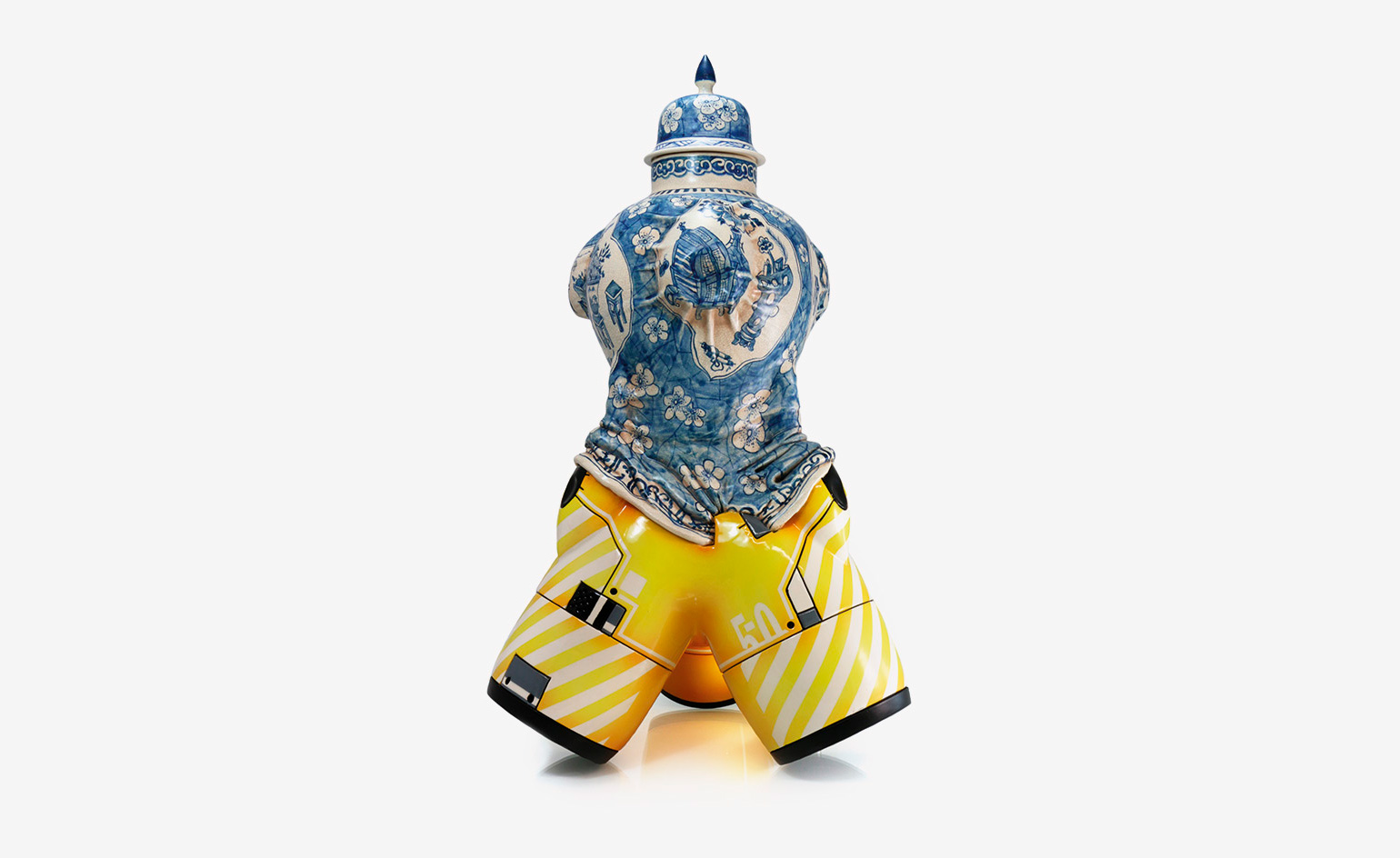
For his piece 'Manga Ormolu' (2016), Canada-based ceramicist Brendan Lee Satish Tang fused patterns used in 18th century gilded ormolu with robotic shapes from Japanese manga

The exhibition will also travel to New York, Tokyo and London

Interested in the dialogue between repair and mending, London-born artist Celia Pym's 'Norweigan Sweater' (2010) comprises a tattered hand-knitted sweater repaired using visible thread
Receive our daily digest of inspiration, escapism and design stories from around the world direct to your inbox.
INFORMATION
For more information, visit the Loewe Craft Prize website
-
 Click to buy: how will we buy watches in 2026?
Click to buy: how will we buy watches in 2026?Time was when a watch was bought only in a shop - the trying on was all part of the 'white glove' sales experience. But can the watch industry really put off the digital world any longer?
-
 Don't miss these art exhibitions to see in January
Don't miss these art exhibitions to see in JanuaryStart the year with an inspiring dose of culture - here are the best things to see in January
-
 Unmissable fashion exhibitions to add to your calendar in 2026
Unmissable fashion exhibitions to add to your calendar in 2026From a trip back to the 1990s at Tate Britain to retrospectives on Schiaparelli, Madame Grès and Vivienne Westwood, 2026 looks set to continue the renaissance of the fashion exhibition
-
 The animals came in two by two, hurrah!
The animals came in two by two, hurrah!Jonathan Baldock’s ‘WYRD’ menagerie takes up residence at Scotland’s Jupiter Artland for the summer
-
 ‘Romantic brutalism’ rethinks Polish craft
‘Romantic brutalism’ rethinks Polish craftAn exhibition in Warsaw gives local makers their due, looking inside the burgeoning world of Polish design
-
 Paper flower gardens and neon mushrooms, Loewe's 'Crafted World' is rooted in heritage, innovation, and child-like wonder
Paper flower gardens and neon mushrooms, Loewe's 'Crafted World' is rooted in heritage, innovation, and child-like wonder'Crafted World' by Loewe is fashion house's first major brand exhibition, opening in Tokyo’s Harajuku district
-
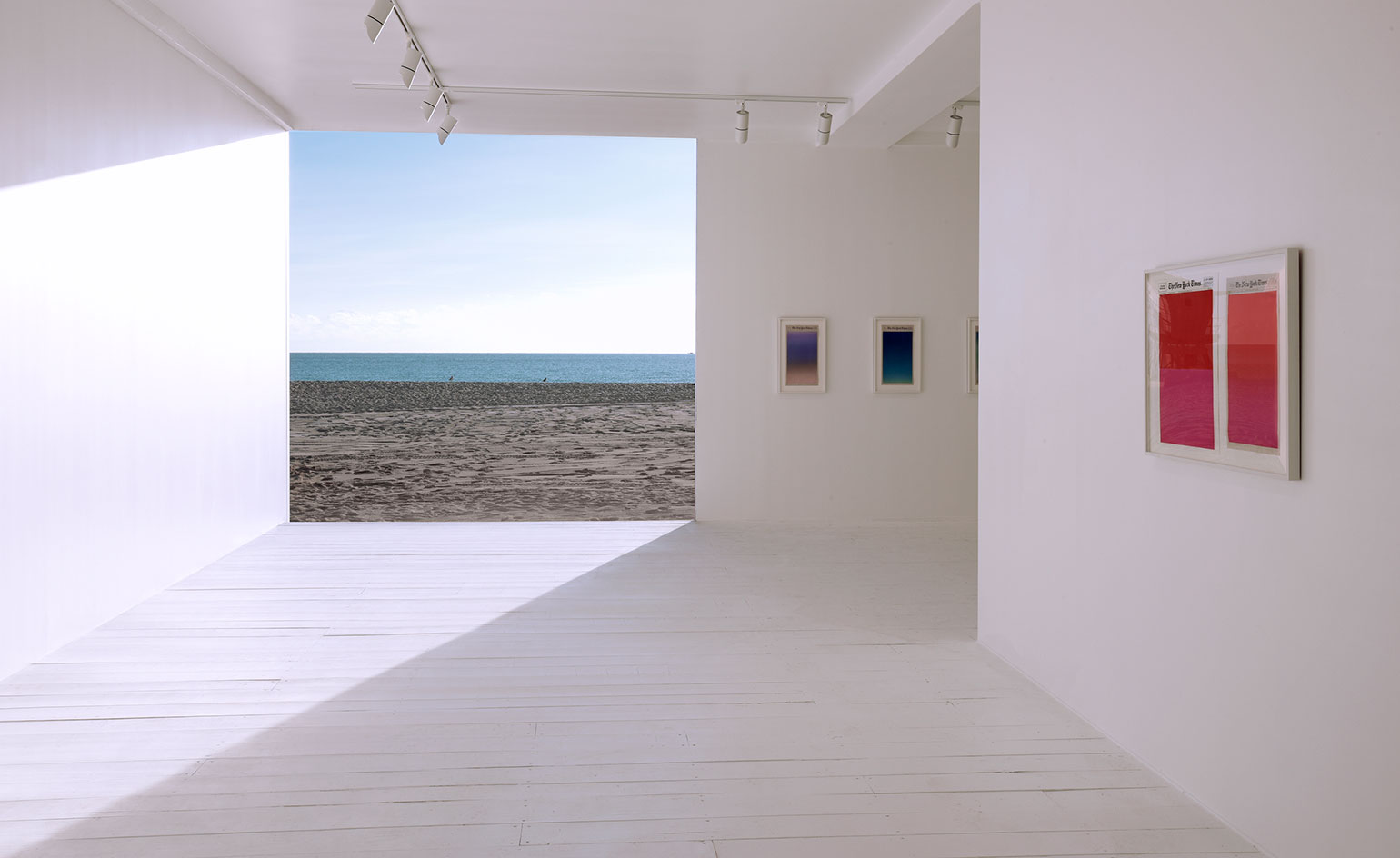 Fashion’s finest findings at Design Miami and Art Basel Miami Beach 2021
Fashion’s finest findings at Design Miami and Art Basel Miami Beach 2021It wasn’t only art and design aficionados that descended on Miami this week; the fashion crowd also flocked to city, including luxury houses such as Loewe, Saint Laurent and Fendi
-
 Maria Porro: ‘We are pouring our hearts into Supersalone’
Maria Porro: ‘We are pouring our hearts into Supersalone’Newly appointed Salone del Mobile president Maria Porro is the first woman in the role. She talks to Wallpaper* Milan editor Maria Cristina Didero, a Supersalone colleague, about her plans to focus the fair on design, sustainability and creative encounters
-
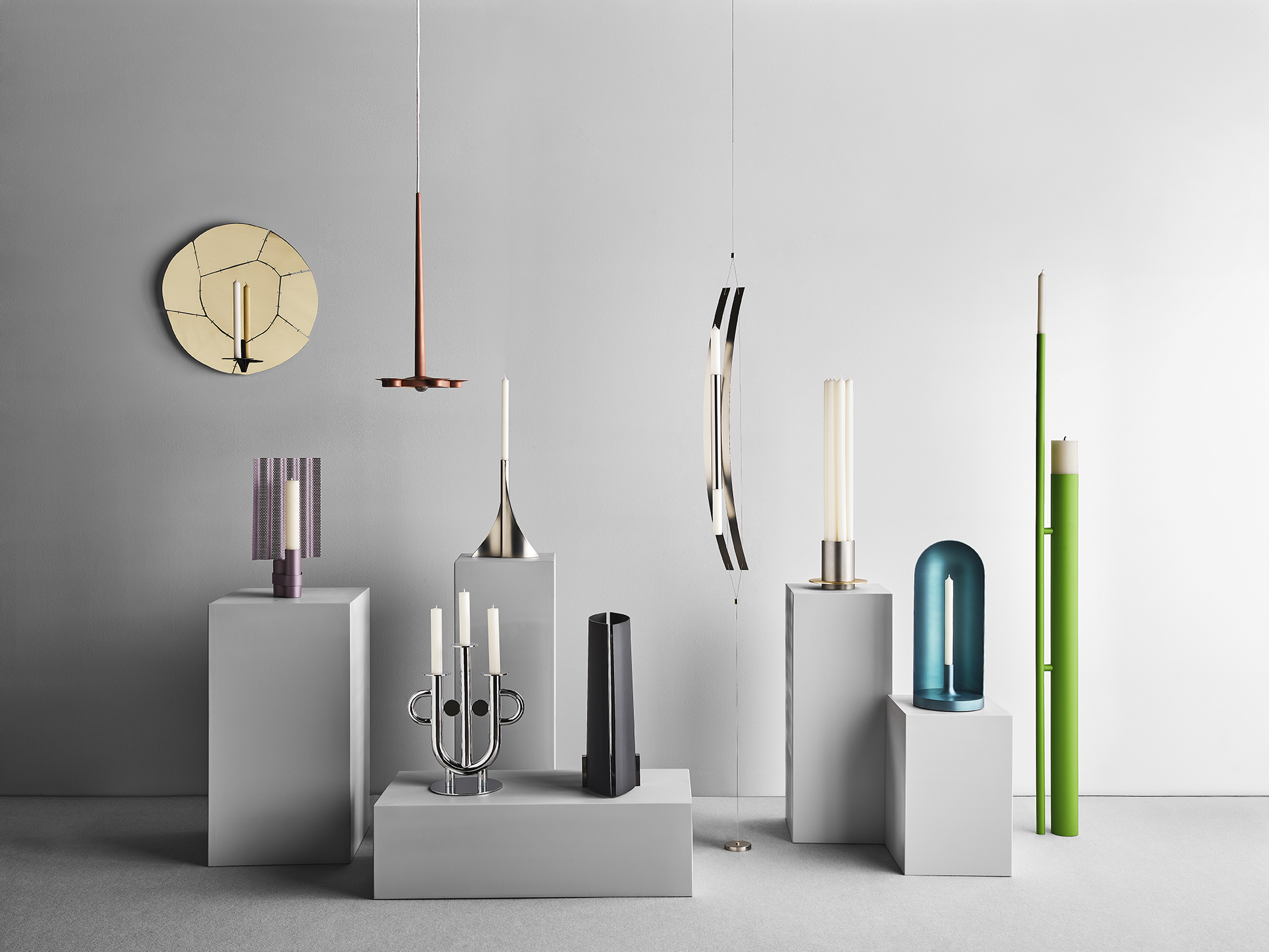 Mingardo crafts candleholders as beacon of hope against cancer
Mingardo crafts candleholders as beacon of hope against cancer‘A Flame for Research’, launching Milan Design Week, sees Italian metal designer Daniele Mingardo invite ten major talents, including Jaime Hayon, Patricia Urquiola, and Philippe Malouin, to create a candleholder in support of cancer research
-
 Loewe Foundation Craft Prize 2021 winner announced
Loewe Foundation Craft Prize 2021 winner announcedTextile designer Fanglu Lin has been awarded the LOEWE Foundation Craft Prize 2021 for her work referencing traditional sewing methods of the women of the Bai minority in Yunnan province, China
-
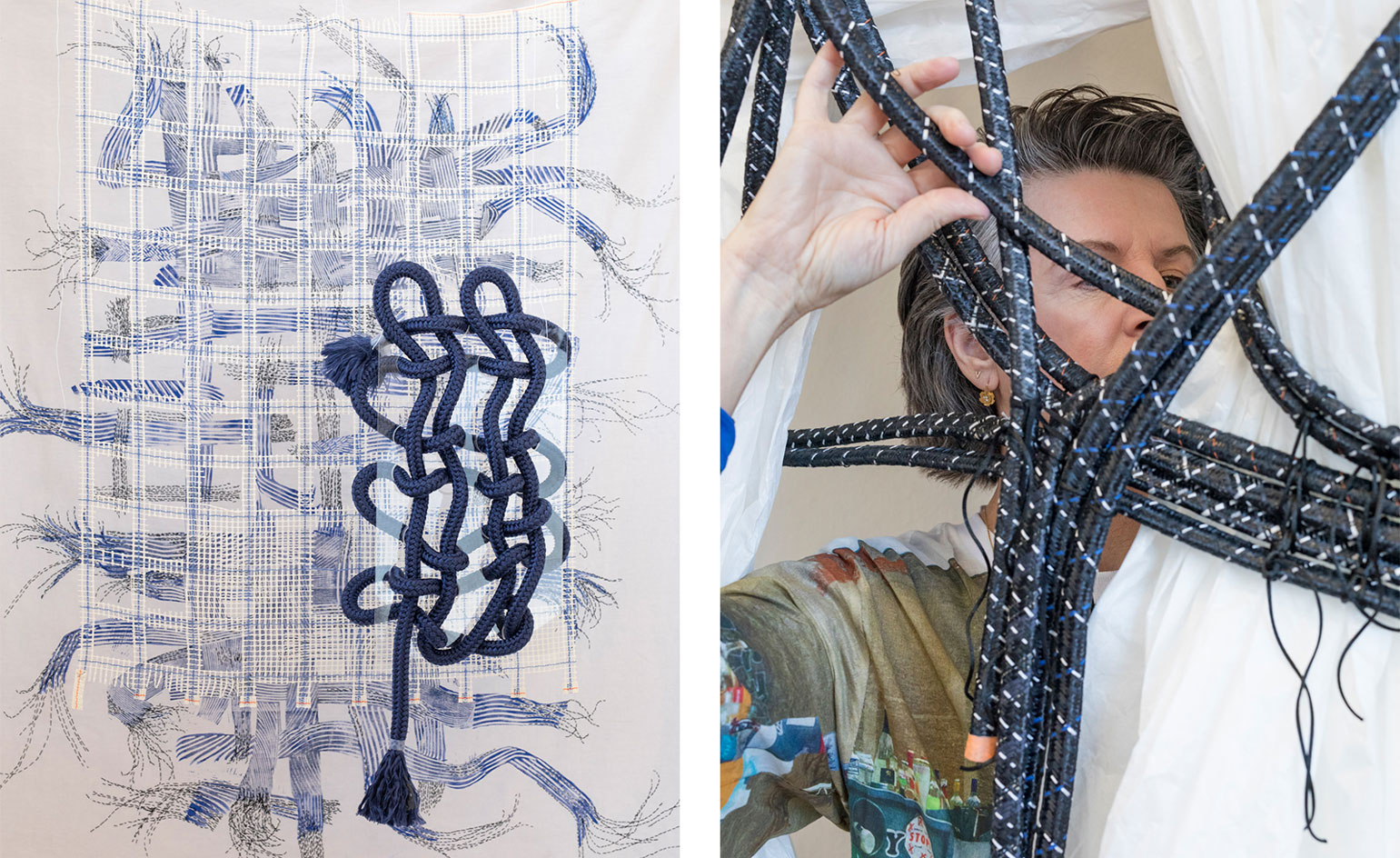 Hella Jongerius weaves the cosmos at Berlin’s Gropius Bau
Hella Jongerius weaves the cosmos at Berlin’s Gropius BauOn the occasion of her ‘Woven Cosmos’ exhibition at Berlin's Gropius Bau in Spring 2021, we talked to Hella Jongerius about textiles and weaving, sustainability in design and the effect of the pandemic on daily life